“What’s the difference between whiskey, Scotch and Bourbon?” is probably one of the most commonly unasked questions for fear of seeming stupid. But my [uneducated] guess is that probably 90% of the population wouldn’t be able to answer the question if you asked them.
Here’s a quick overview of the differences between the most popular styles of whiskey so that you can sound intelligent next time someone wants Bourbon and asks for Jack Daniels– “Actually, that would be a Tennessee Whiskey, and here is why…”
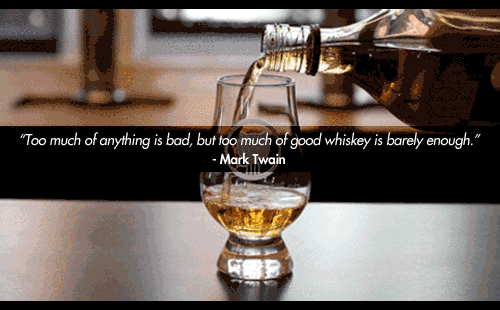
Photo Courtesy of Tumblr.com
What exactly is Whiskey?
Whiskey means “water of life” in Gaelic. It is a liquor distilled from a type of grain mash (wheat, corn, rye, barley, etc). The beginning steps are very similar to that of beer, usually without the hops, and then the beer is distilled. It must be bottled at a minimum of 40% ABV. The biggest difference between whiskey and other grain liquors, like vodka, is that it is aged in oak. This give it its distinct taste and qualities.
Bourbon vs. Tennessee Whiskey – Close, but no Cigar
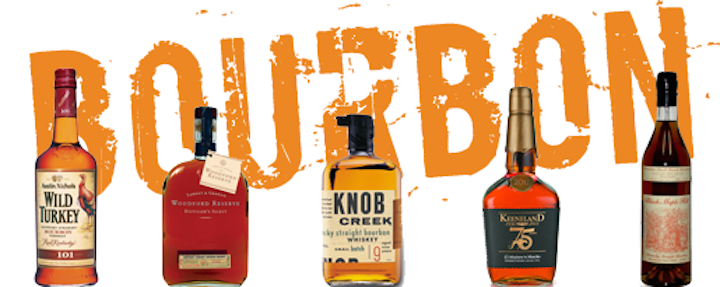
Photo courtesy of realmendrinkwhiskey.com
This doesn’t actually have anything to do with cigars, it just seemed to fit with the whole whiskey theme. However, there’s a saying that goes “All Bourbon is whiskey, but not all whiskey is Bourbon”. There are 7 specific rules that a distiller must follow for a whiskey to be considered Bourbon:
1) It must be from the USA
2) It must contain at least 51% corn
3) It must be distilled at less than 160 proof (80% alcohol)
4) It must be aged in new, charred, American White Oak Barrels
5) It must be entered into those barrels at no greater than 125 proof
6) It must be aged for a minimum of 2 years
7) The flavor cannot be altered
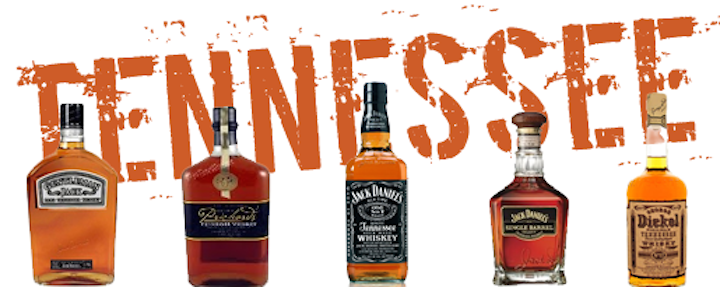
Photo courtesy of realmendrinkwhiskey.com
Pretty strict, right? And it used to be the rule that it had to come from Bourbon County, Kentucky, but that is no longer a requirement. (Funny story – its actually prohibited to sell alcohol in Bourbon County, lol.)
Jack Daniels Tennessee Whiskey is an interesting brand because it actually follows all of the rules required to be Bourbon, but they like to add a final step to make their product unique – they do a final filter through maple charcoal before bottling.
Scotch Whisky – What the heck is single malt?
In TV and movies you always hear some hot shot rich guy ask for “single malt scotch, neat” like he knows his stuff. Well let’s figure out exactly what he’s talking about.
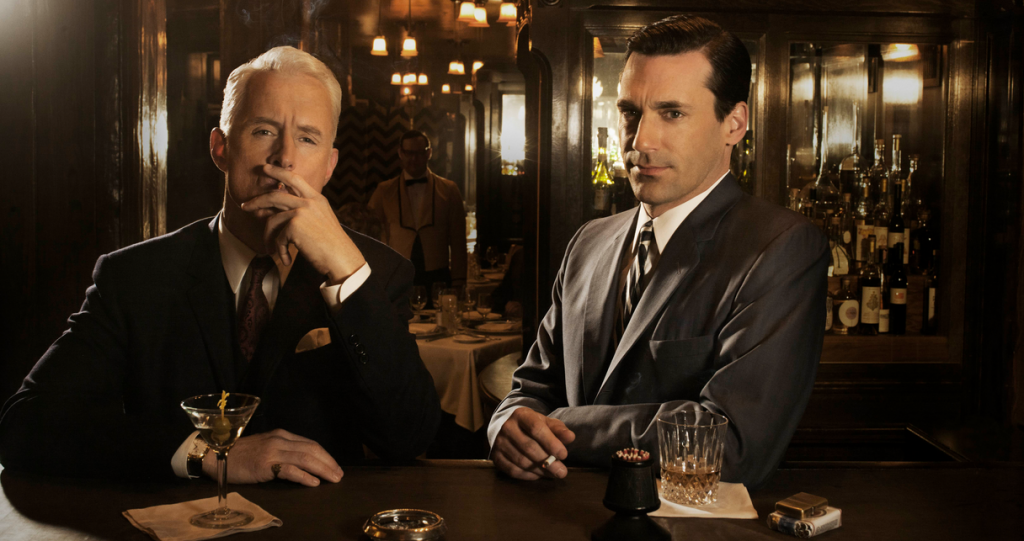
Photo Courtesy of AMC
Let’s start with what exactly is malt. Malt is a grain, typically barley, that has been steeped, germinated, and dried. Why do they need this?
Two reasons:
1) The boring scientific reason is to prepare the starch for conversion to sugar for the yeast to feed off of (weird).
2) For color and flavor. Scotch is easily distinguished from other types of whiskey because the malted barley adds a smoky (“peaty”) flavor to the whiskey. Smokiness is a signature distinguishable taste for Scotch.
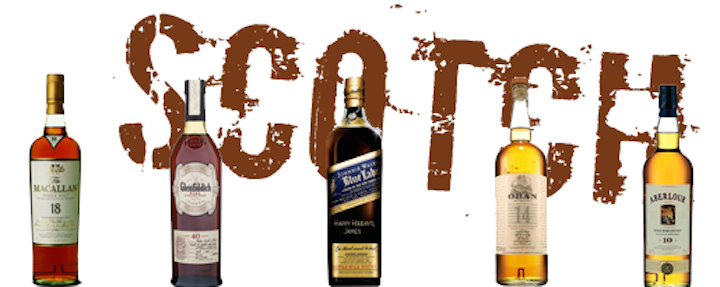
Photo courtesy of realmendrinkwhiskey.com
Single malt Scotch is probably the most well known whisky that uses malt. The word “single” refers not to the product of a single batch or barrel, as most commonly thought, but a single distillery. Scotch is similar to Champagne in that it is named for the place it is produced, Scotland, and no one else can call his or her product Scotch if it is not from Scotland. So, essentially, single malt Scotch is whiskey produced at one single distillery in Scotland.
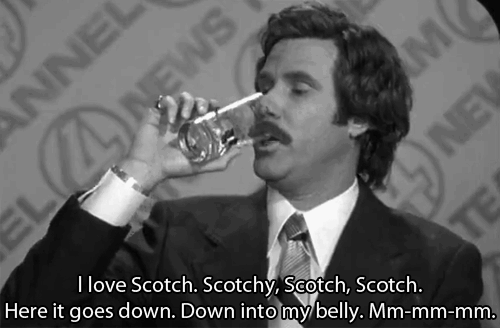
Photo Courtesy of Tumblr.com
There are also similar laws to that of Bourbon that Scotland has in place to keep Scotch quality higher, but having the name “Scotch” isn’t exactly a promise of quality. Spoiler alert: not all whiskey has to use malt, though, and not all Scotch is single malt; there is also single grain, blended malt, and blended grain.
What about Irish Whiskey?
You probably get it by now, Scotch is from Scotland, and therefore Irish whiskey must come from Ireland. And you’re right! You’re catching on. The biggest differences between Irish and Scotch whiskey is that Ireland is known for triple distillation, which produces a lighter flavor and no smokiness, while Scotland typically double distills.
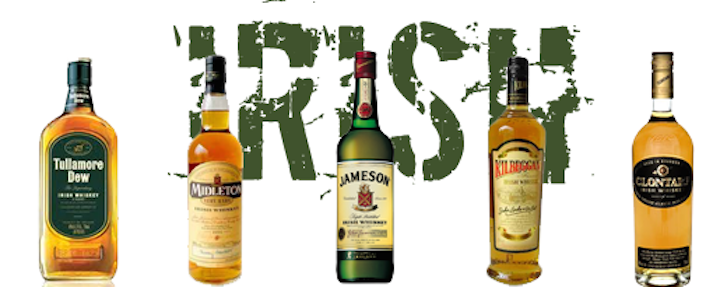
Photo courtesy of realmendrinkwhiskey.com
Many distillers also use a process called pot distillation (it’s a long story, look it up) that adds an oily texture and spicy note. There are also only a handful of working Irish distilleries compared to Scotland and America, which explains why there are such a small amount in the market.
How about Canada?
Not much to say as per usual with Canada (just kidding). Canadian whisky is actually the number one imported spirit into the U.S. On that note, go try Crown Royal, Pendleton, or Canadian Club to get an idea of Canadian whisky.

Fun Facts
- Moonshine is a corn whiskey that hasn’t been aged.
- Whiskey with an “e” is either American or Irish. Whisky with no “e” is Canadian or Scottish.
- Contrary to popular belief, you probably shouldn’t put pour whiskey over ice (on the rocks), it makes it too cold and dilutes the flavor. It is also suggested not to drink it neat as the high alcohol can overpower the taste. The best way to drink whiskey is with a splash of still spring water. (But hey, to each his own, right?)
- This page has some more great information on whiskey if this article has sparked an interest. ( And I do hope so)


